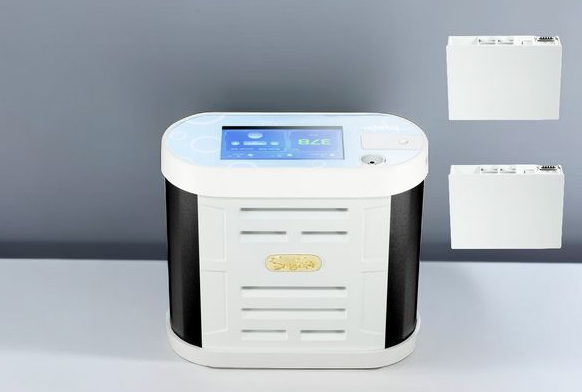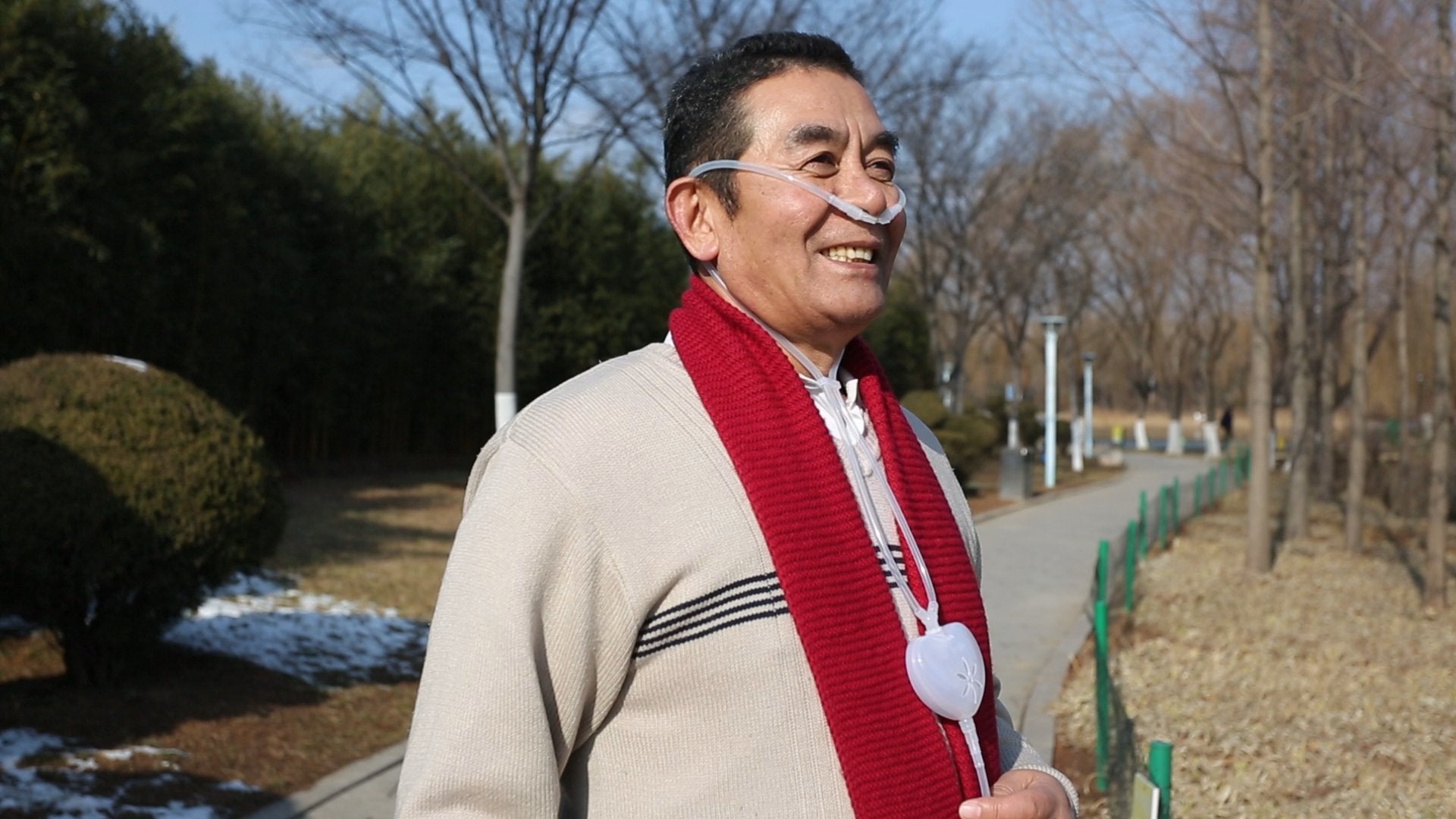|
Feature |
5-Liter Oxygen Concentrator |
10-Liter Oxygen Concentrator |
|
Flow Rate |
Up to 5 LPM |
Up to 10 LPM |
|
Oxygen Concentration |
Over 90% Pure Oxygen |
Over 90% Pure Oxygen |
|
Portability |
Lighter, under 20 pounds |
Heavier, 30-40 pounds |
|
Battery Life |
2 to 5 hours |
1 to 3 hours |
|
Energy Consumption |
350 to 730 watts |
Over 1000 watts |
|
Cost |
$600 to $2400 |
$1000 to $3000+ |
Oxygen concentrators are medical devices that provide supplemental oxygen to those in need. They work by filtering nitrogen out of room air and concentrating the oxygen to deliver higher levels to the user. Oxygen concentrators come in different sizes based on their maximum flow rate, measured in liters per minute (LPM). Two common sizes are 5-liter and 10-liter models. This article explores the differences across factors like flow rate, oxygen concentration, portability, battery life, energy consumption, and cost to enable you to make an informed decision between the two.
What Is a 5L Oxygen Concentrator?
A 5-liter oxygen concentrator provides a maximum flow rate of 5 LPM. This lighter-duty model works well for lower oxygen needs, such as with moderate chronic obstructive pulmonary disease (COPD) or emphysema. The maximum 5 LPM flow can sufficiently meet many supplemental oxygen needs during both stationary and portable use.
What Is a 10L Oxygen Concentrator?
A 10-liter oxygen concentrator delivers higher flow rates of up to 10 LPM to meet increased oxygen demands. The maximum 10 LPM flow makes 10L concentrators well-suited for more severe respiratory conditions like advanced COPD, where higher flow is needed.

Key Differences Between 5L and 10L Oxygen Concentrators
Now that we've covered the basics of both 5L and 10L oxygen concentrators, let's continue to explore some of the major differences between the two in more detail:
- Flow Rate – The key specification that sets 5L and 10L concentrators apart is flow rate, measured in liters per minute (LPM). 5L models provide up to 5 LPM, while 10L models deliver a higher flow of up to 10 LPM. This difference in maximum flow rate is important because it directly impacts what conditions each machine is suited for. 5LPM meets the needs of moderate respiratory conditions. But for more advanced illnesses, the 10LPM flow of a 10L concentrator is required.
- Oxygen Concentration – Most oxygen concentrators on the market today, including both 5L and 10L machines, are designed to separate oxygen from room air and supply over 90% pure oxygen consistently. This high oxygen concentration supports improved respiration and blood oxygen saturation.
- Portability – 5L oxygen concentrators weigh less, typically under 20 pounds, and have a smaller overall footprint. This compact size and minimal weight makes 5L models much easier to pick up, move around, and transport from room to room or out of the home as needed. This superior portability allows 5L owners greater independence and mobility with their supplemental oxygen compared to bulkier 10L units.
- Battery Life – To enable portability on battery power, portable 5L concentrators integrate high-capacity rechargeable lithium-ion batteries. These batteries allow 5L models to operate away from wall power, typically running anywhere from 2 to 5 hours on a single full charge. Larger 10L oxygen concentrators also include batteries on some units, but their batteries span shorter durations due to higher energy demands - often only 1 to 3 hours per charge.
- Energy Consumption – Because of their smaller air separation systems and flow capacity, 5L oxygen concentrators consume less electrical power - drawing around 350 to 730 watts while running. In contrast, the larger capacity 10L units with double the flow rate require significantly more energy to operate, generally over 1000 watts. This higher energy use also generates more heat and noise from cooling fans.
- Cost – Given their smaller size, lower power needs, and lighter-duty components, 5L oxygen concentrators ultimately carry a lower purchasing cost for consumers. 5L concentrator pricing runs from $600 on the low end for basic models and up to $2400for units with higher flow precision, longer battery life, or advanced features. Larger 10L concentrators range from $2000 up to $4000 or more, depending on specifications. Especially for users who may not require 10LPM flow, choosing a 5L oxygen concentrator can provide notable cost savings.

5L vs 10L Oxygen Concentrator: Which is Right for You?
Determining whether a 5-liter or 10-liter oxygen concentrator better fits your oxygen needs depends on several key factors:
- Oxygen Flow Requirement – Your doctor will prescribe a specific oxygen flow rate in liters per minute (LPM) based on an assessment of your respiratory condition. If you require 5LPM or less, a 5L concentrator can meet your prescribed level. But if over 5LPM is needed, the higher 10LPM flow capacity of a 10L model is necessitated.
For example, someone with moderate COPD may need 3LPM during activity. A 5L concentrator can handle this. But someone with more severe lung disease may require 6-7LPM while active. For this higher flow, a 10L oxygen concentrator is the right choice.
- Mobility Needs – If you prioritize portable use for travel away from home or movement between rooms, compact 5L oxygen concentrators work better. A 10L one weighs 30-40 pounds, which could hinder frequent mobility. However, for stationary use in one location, a 10L model's larger size is fine.
Say you like taking daily walks outside or going on vacation requiring portable oxygen. The under-20-pound weight of a 5L concentrator makes mobility easier. But if you only use oxygen while sitting or sleeping, a 10L model can work well for in-home use.
- Budget – The lower purchasing and operating costs can make 5L oxygen concentrator systems more affordable. But for some, if the higher 10LPM flow rate is necessary for their health, the higher 10L model cost may be justified.
A retired person on a fixed income may prefer the lower price tag of a 5L model for occasional use. However, someone with high flow needs depending on oxygen would likely need to budget more for a 10L system that can meet their respiratory demands.
Consult your doctor on the right LPM flow rate for your condition. This key specification, along with factors like mobility needs, activity levels, and budget, will help determine if a 5L or 10L oxygen concentrator is a better fit. Consider total at-home versus on-the-go use scenarios before deciding with your medical equipment provider.
The Bottom Line
5L and 10L oxygen concentrators serve overlapping yet distinct supplemental oxygen needs. Key differences in maximum flow rate, weight and mobility, battery life, power consumption, and cost set them apart from each other. By understanding your prescribed flow rate, mobility needs, and budget, you can determine if a 5-liter or 10-liter oxygen concentrator better fits your respiratory condition and lifestyle. Consult your doctor and medical equipment provider to make sure you get the properly sized oxygen concentrator.
FAQs about 5L and 10L Oxygen Concentrators
Q: Who are the typical users of 5L and 10L oxygen concentrators?
A: Individuals with moderate respiratory conditions like COPD or emphysema may find a 5L oxygen concentrator sufficient. However, if a person has a more severe respiratory condition requiring a higher flow of oxygen, a 10L model might be essential.
Q: Can 5L and 10L oxygen concentrators be used continuously?
A: Both 5L and 10L concentrators can be used continuously, although running times may differ due to different power and battery capacities. Always consult the device's instructions or your healthcare provider for specific usage guidelines.
Q: Does a 10L concentrator require more maintenance than a 5L concentrator?
A: The maintenance requirements generally don't differ significantly between 5L and 10L concentrators. However, due to a 10L machine's increased capacity and usage, components might wear more quickly.
Q: In terms of noise generation, which is quieter: a 5L or a 10L concentrator?
A: Due to its larger capacity and higher energy consumption, a 10L oxygen concentrator tends to be noisier than a 5L machine. Specific decibel levels can vary between different models and brands.





Leave a comment
This site is protected by hCaptcha and the hCaptcha Privacy Policy and Terms of Service apply.